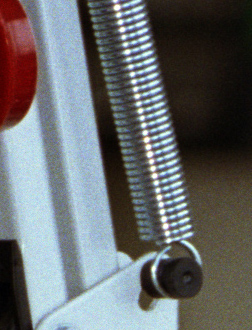
The look of unsharp regions is quite homogenous.
Since I have got my APS SLR I am trying to find out some more about the films I can use with it for getting best results from the smaller negative (compared to 35mm). I am showing examples of APS negative film along with examples of 35mm slide film I recently used.
For the Tests I decided to mainly use a 50mm prime, it might be the sharpest lens available for me.
The comparisons were made from parts of images scanned with 2720 dpi from slide/negative. I try to find parts with sharp subjects and also with blurry background in the image. This is for getting an impression of the sharpness of the film and of its behaviour in unsharp regions. Some films tend to produce some kind of noise there, related to the grain of the film. I also try to find grain directly (via a loupe in the prints or with the aid of a piece of paper in projected slides).
The sections shown here are really tiny on the negative (252x330 pixels at 107 pixels/mm are not more than 2,3x3,1 mm˛).
What I found is a visible difference especially concerning grain and texture between negative and slide films. Even the Fuji Nexia F100 delivers far stronger texture than any of the 200 ISO slide films I used, not to mention the Fuji Velvia with its 50 ISO speed.
In this section I have mainly used films rated at ISO 200, with the exception of the Fuji Nexia F100, which is rated at ISO 100.
 |
The A200 is the allround film from Fuji for APS cameras. Its
grain is relatively fine and the film posseses a high resolution, but in
the prints (10x18cm), small dark dots can be found with a loupe.
The look of unsharp regions is quite homogenous. |
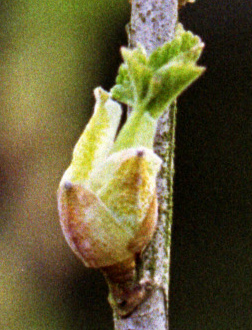 |
The F100 is the film with the finest grain and the highest
resolution from any of the Fuji-APS negative films - at least according to
the sayings of Fuji. Its grain is relatively fine and the film posseses a
high resolution, but on panorama prints with 10x25cm size I was astonished
about the relatively coarse texture of unsharp regions.
The look of unsharp regions is more inhomogenous than with the A200! But in the prints there is really no grain visible, not even with a loupe.
|
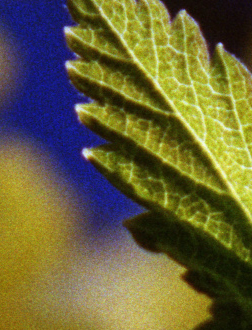 |
This film is obviously labelled "Advantix" or
"Advantix Ultra" outside Germany. Its colors are quite saturated,
as well as with other Kodak amateur films. Nevertheless, the film has a
quite fine grain with a texture which is similar to that of the Fuji Nexia
F100.
Resolution of this film might be slightly worse as with the F100. No sharp grain is visible on 10x18cm large prints, this scan reflects the occurence quite good. |
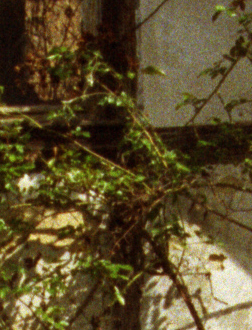 |
The Futura 200 ist AGFA's APS film for the wide range of
cameras having acceptable speeded lenses.
Color saturation and contrast seems comparable to Fuji's Films. The film shown here was allready overaged (probably arount 2 years old). The photo store where I usually buy my films from found a pack of 15exp Futura 200 which got forgotten somewhere in the corner of their freezer, so the results here might not reflect the actual AGFA. |
The samples here might also be interesting for people doing medium format shots, because most of the films I use are also available for 120 or 220 roll film.
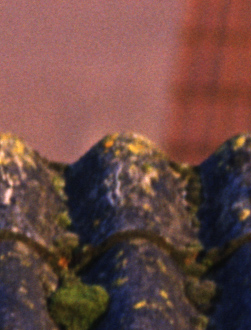 |
Fuji offers with Velvia a very fine grained slide film with
just 50 ISO. For a contrast of 1.6:1 Fuji states a resolution of 80 lines/mm,
and because my scanner reaches only some 55 lines/mm the very fine texture
of the film is nearly hidden.
Velvia is also known for its saturated colors. This film has been exposed at 40 ISO, which might also have improved color saturation.
|
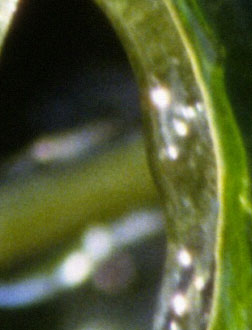 |
Elitechrome 200 is one of Kodak's slide films with 200 ISO
sensitivity for the E-6 process.
This image shows the good saturation of the Kodak slide films. Texture in homogenous areas is slightly stronger than with the RSX-II 200. This image was taken with my 75-300 mm lens, which is not of the sharpest sort. |
| The RSX-II is AGFA's slide film for professionals. It
features neutral color reproduction, reasonable resolution and faintly
texture on homogenous areas.
AGFA's line of slide films seems to me the one with least difference between amateur and professional films. Maybe they use a very similar emulsion and do the selection afterwards, using the emulsions with smaller tolerance for the pro line and the rest for the amateur line. Image was taken with 50 mm prime lens. |
To be continued!